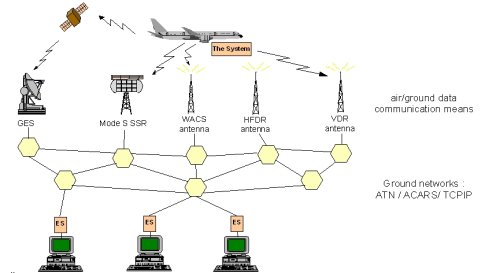| Description: |
This study was done in the framework of the TOPCASED project. The
object of the study was an experimental ATC (Air Traffic
Control) subsystem, which had been investigated in the framework
of the European ITEA project SPICES (and published in P. Gaufillet,
S. Heim, H. Bonnin, P. Dissaux: "AADL Experimentation at Airbus", 1st
International Conference on Reliable Software Technologies ADA Europe
2009).
The ATC subsystem was originally specified in AADL and then converted
automatically into a FIACRE model using the AADL to FIACRE translator
developed in the TOPCASED project. By studying the generated FIACRE
model carefully, it was discovered that the translation of shared AADL
variables was not optimal. The FIACRE model was therefore improved
manually, replacing certain shared variables by constants, and ensuring
that each remaining shared AADL variable is translated into one single
shared FIACRE variable, instead of several ones (between two and four)
in the generated FIACRE code.
The FLAC (FIACRE to LOTOS Adaptation Component) translator was
then applied to convert the FIACRE model (about 1,000 lines) into
LOTOS (six concurrent processes, about 3,400 lines of code).
The ATC system heavily relies on priorities and quantitative time
constraints, which cannot be directly expressed in LOTOS and are not
handled by the FLAC translator. Therefore, a new LOTOS action ("tick")
that models the elapse of time was introduced at three places. To
ensure that this "tick" action has a lower priority than all other
actions, and more generally to implement the concept of priorities
that exist in FIACRE, an enhanced version of the GENERATOR tool of
CADP was developed.
Using CADP, the corresponding state space was generated (about 308,000
states and 421,000 transitions) and proven branching equivalent with
the state space obtained by applying the FRAC and TINA tools of
LAAS-CNRS to the original FIACRE model. This cross-verification
confirmed the absence of deadlock property, which had already been
shown using TINA. Using the EVALUATOR model checker of CADP, it was
also verified that the AADL scheduler correctly executes all ATC
processes during each time period.
Verification then focused on concurrent accesses to shared AADL
variables, an analysis that cannot be done in TINA as FRAC does not
generate any action when a shared variable is accessed. Surprisingly,
two distinct race condition problems were discovered (destructive
concurrent writes on a shared variable), one during the initialization
phase (during the first period, after 8 actions) and another one that
occurs much later (around the 10th period, after 333 actions). In both
cases, after a transitory phase, the ATC system enters into an
infinite loop (livelock) in which all shared variables are no longer
accessed, except for being periodically reset to zero, and all
concurrent processes continue to execute but do not perform any useful
task.

Air traffic control
|


 Back to the CADP case studies page
Back to the CADP case studies page